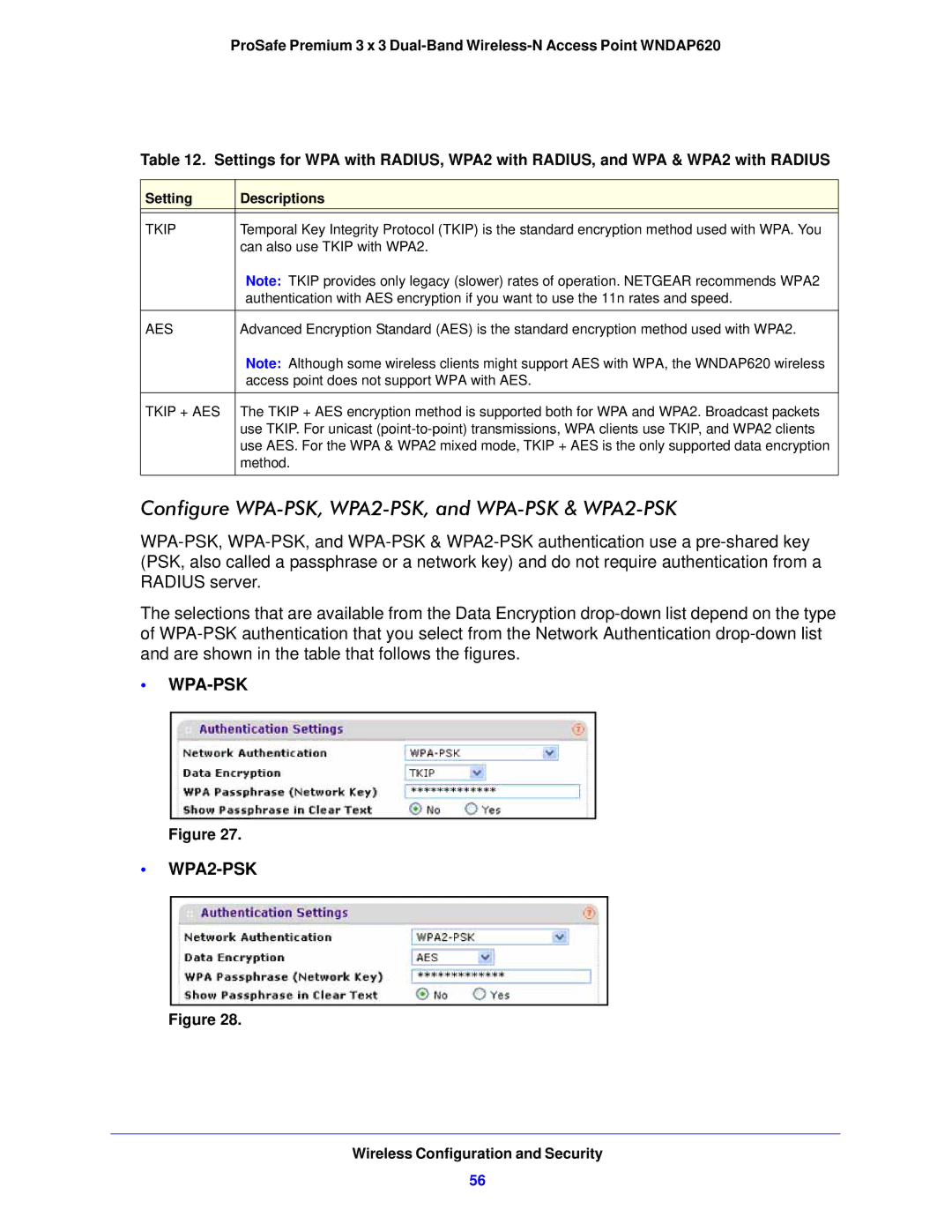
ProSafe Premium 3 x 3
Table 12. Settings for WPA with RADIUS, WPA2 with RADIUS, and WPA & WPA2 with RADIUS
Setting | Descriptions |
|
|
TKIP | Temporal Key Integrity Protocol (TKIP) is the standard encryption method used with WPA. You |
| can also use TKIP with WPA2. |
| Note: TKIP provides only legacy (slower) rates of operation. NETGEAR recommends WPA2 |
| authentication with AES encryption if you want to use the 11n rates and speed. |
|
|
AES | Advanced Encryption Standard (AES) is the standard encryption method used with WPA2. |
| Note: Although some wireless clients might support AES with WPA, the WNDAP620 wireless |
| access point does not support WPA with AES. |
TKIP + AES | The TKIP + AES encryption method is supported both for WPA and WPA2. Broadcast packets |
| use TKIP. For unicast |
| use AES. For the WPA & WPA2 mixed mode, TKIP + AES is the only supported data encryption |
| method. |
|
|
Configure WPA-PSK, WPA2-PSK, and WPA-PSK & WPA2-PSK
The selections that are available from the Data Encryption
•WPA-PSK
Figure 27.
•WPA2-PSK
Figure 28.
Wireless Configuration and Security
56
